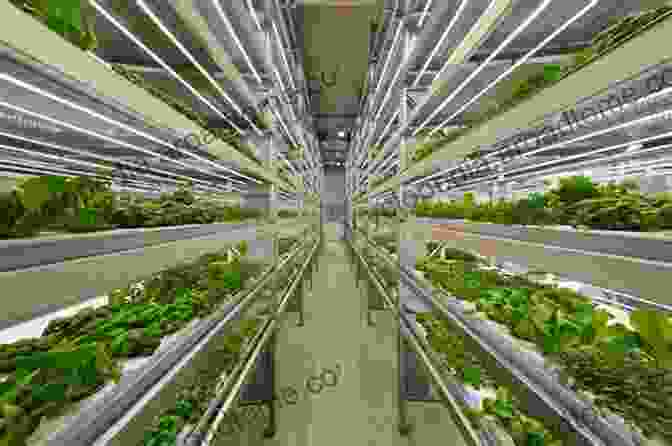In an era where global food demand continues to soar alongside concerns about climate change and resource scarcity, the advent of indoor vertical farming has emerged as a beacon of hope for the future of agriculture. This cutting-edge farming technique promises to revolutionize the way we grow food, offering numerous advantages that have the potential to transform the industry.
This comprehensive guide delves into the innovative world of indoor vertical farms, providing an in-depth exploration of their technology, sustainability benefits, and economic potential. By understanding the transformative power of indoor vertical farming, we can pave the way for a more sustainable, efficient, and resilient food system.
Understanding the Concept of Indoor Vertical Farming
At its core, indoor vertical farming is a revolutionary approach to agriculture that involves growing plants in vertically stacked layers within a controlled environment. This controlled environment allows farmers to optimize growing conditions, such as temperature, humidity, lighting, and nutrient levels, to maximize plant growth and yield.

Indoor vertical farms can be located in urban areas, repurposed warehouses, or dedicated facilities. By utilizing artificial lighting and hydroponic or aeroponic growing systems, these farms can produce crops year-round, regardless of external weather conditions or seasonal limitations.
Innovative Technologies Driving Indoor Vertical Farming
The success of indoor vertical farms relies heavily on advanced technologies that enable precise control over the growing environment. These technologies include:
- Artificial Lighting: LED grow lights provide optimal light spectra and intensity for plant growth, allowing farmers to control photoperiods and maximize yields.
- Hydroponics and Aeroponics: These soilless growing systems deliver nutrients directly to plant roots, eliminating the need for soil and enabling precise control of nutrient uptake.
- Environmental Control Systems: Sensors and automated systems monitor and adjust temperature, humidity, and CO2 levels to create an ideal growing environment for each crop.
- Data Analytics and Machine Learning: Real-time data collection and analysis help farmers optimize growing conditions, predict yields, and identify potential issues.
Sustainability Advantages of Indoor Vertical Farming
Indoor vertical farms offer significant sustainability benefits compared to traditional farming practices:
- Reduced Water Usage: Hydroponic and aeroponic systems use up to 90% less water than field farming, making vertical farms a water-efficient solution in regions facing scarcity.
- Minimal Land Requirements: Vertical farms maximize space utilization, allowing for food production in urban areas or regions with limited land availability.
- Controlled Environment: Indoor vertical farms eliminate the use of pesticides and herbicides, resulting in chemical-free produce and reducing environmental pollution.
- Lower Carbon Footprint: By locating farms near urban areas, transportation distances and emissions are minimized, contributing to a lower carbon footprint.
Economic Potential of Indoor Vertical Farming
Indoor vertical farms are not only environmentally sustainable but also economically viable:
- High Yields: Controlled environments and optimized growing conditions enable vertical farms to produce higher crop yields per square foot than traditional farming.
- Year-Round Production: Indoor vertical farms can produce crops all year round, ensuring a steady supply and premium pricing for high-value produce.
- Reduced Labor Costs: Automation and technology streamline operations, reducing labor costs associated with traditional farming practices.
- Market Demand: Consumers are increasingly seeking fresh, local, and sustainable produce, which vertical farms can provide consistently.
Challenges and Opportunities in Indoor Vertical Farming
While indoor vertical farming offers numerous advantages, it also faces certain challenges and opportunities:
Challenges
- High Initial Investment: Establishing an indoor vertical farm requires a significant capital investment for infrastructure, technology, and equipment.
- Energy Consumption: Artificial lighting and climate control systems require substantial energy consumption, which can impact operating costs.
- Limited Crop Variety: While vertical farms can produce a wide range of crops, they are currently most suited for leafy greens, herbs, and some fruits.
Opportunities
- Government Support and Investment: Governments worldwide are recognizing the potential of vertical farming and providing incentives for research and development.
- Technological Advancements: Ongoing advancements in LED lighting, hydroponic systems, and data analytics continue to improve efficiency and reduce costs.
- Consumer Education: Raising awareness about the benefits of indoor vertical farming can drive consumer demand and market growth.
Indoor vertical farming stands at the forefront of agricultural innovation, offering a transformative solution to global food challenges. By unlocking the potential of controlled environments and advanced technologies, this farming technique can revolutionize the way we produce food, promote sustainability, and ensure food security for future generations.
As the industry continues to evolve and technological advancements emerge, indoor vertical farms will undoubtedly play an increasingly significant role in shaping the future of food production. By embracing this innovative approach, we can create a more sustainable, efficient, and resilient food system that nourishes our communities and preserves our planet.
Dive deeper into the world of indoor vertical farms by exploring the resources and research available online. Together, we can unlock the full potential of this transformative farming technique and create a brighter future for agriculture.


























































































